Frequency converters are critical when one starts to think about how to increase the efficiency and performance of the electrical systems. The reason is that they are the devices that give room for adjusting the motors’ speeds, enabling one to carry out activities under certain conditions that are best suited for such operation. As noted in the manufacturing industry, there is a greater need for flexible power control mechanisms for air conditioning systems and alternative power technologies than ever before. This article discusses the importance of AC frequency converters and how these devices improve efficiency, minimize energy consumption, and facilitate current practices to support sustainability. By the end of this paper, you will know that AC frequency converters are not optional devices simply added to help improve the performance of applications; they are necessary tools for performing applications better.
What is the Purpose of a Frequency Converter?
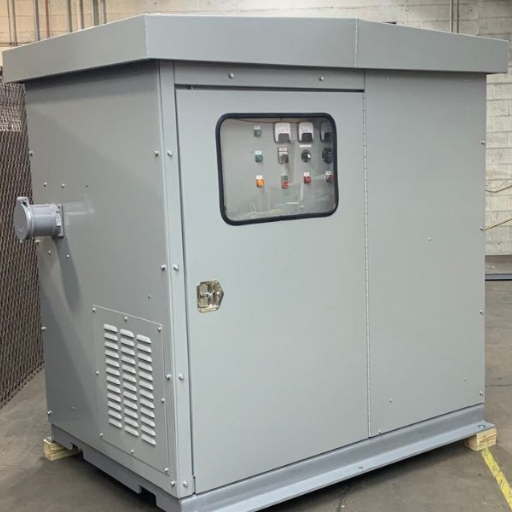
An AC frequency converter is intended to provide a specific power frequency to a particular application. By achieving this, the speed of operation and its performance level are maintained within an optimum range for the machine. This is particularly important for systems employing electric motors, which can thus be operated at desired speeds with the power consumption or mechanical stress on them kept within optimum levels. AC frequency converters also reduce energy usage and costs, with the ability to apply loads on polar coordinates. Thus, given their importance, they become inevitable for any industry that uses new technologies for greater gains.
Understanding the Function of a Frequency Converter
An AC Frequency Converter is a device that changes the frequency of the electrical energy fed to an AC motor, thereby modulating the motor speed and torque. It achieves this using three major sections: rectification, a DC-bus filtration section, and an inverter section. The rectification section converts the AC input to DC using a rectifier. In the second section, the DC-Bus Filtration stage is engaged to stabilize or smooth output power, an action necessary for a motor’s stable operation. Last, the inverter portion converts the DC power back to AC power with the desired output voltage and frequency.
This operation is beneficial in improving the energy efficiency of several applications, including heating, ventilation, air conditioning (HVAC), industrial motors, and conveyor systems. When frequency converters are used to suit various loads, energy utilization is improved, the performance of the systems is enhanced further, and the equipment runs longer. Additionally, the recent development of frequency converters has introduced complex algorithms and settings, allowing users to change operating conditions to meet precise requirements. Again, these aspects make it clear that frequency converters have become vital fixtures in many electrical and mechanical applications.
How Does a Frequency Converter Work?
An AC Frequency Converter is primarily responsible for altering the frequencies of electric power supplied to any appliance. It allows the equipment connected to that power supply to operate at an appropriate speed and the desired states. It comprises three main stages of transforming electrical current: rectification, filtration, and inversion. In rectification, the alternating current (AC) input is turned into its direct current (DC) equivalent using a rectifier switch. The direct current (DC) supply undergoes a filtration stage, which masks the problems of voltage droop and other irregularities to smooth and provide a neat supply. In the end, in the inverters stage, they use insulated-gate bipolar transistors (IGBTs) or other transistors to transform DC power into the desired frequency and voltage of AC.
Today’s most recent frequency converters may include sophisticated controls, including everything from microcontrollers to high-fidelity drives that enable the user to tailor the output parameters, e.g., speed, torque, or even timing. These features make frequency converters highly critical in the advent of fast-paced industries, e.g., automotive, aerospace, textile, food, and plastics. In addition to these direct benefits to consumers, they have proven especially beneficial in energy saving and load matching.
Key Components of a Frequency Converter
A frequency converter comprises several critical components that enable its functionality and reliability in diverse applications:
- Rectifier Unit
The rectifier converts the incoming AC power supply into DC power. This process involves using diodes or thyristors arranged in a bridge configuration, ensuring an efficient and stable DC output for subsequent stages.
- DC Link (Intermediate Circuit)
The DC link is an intermediary energy storage unit, typically containing capacitors or inductors. It stabilizes the DC voltage and filters out any ripples generated by the rectification process, providing a clean and consistent power supply for the inverter stage.
- Inverter Module
The inverter module transforms the DC power back into AC power with adjustable frequency and voltage. It employs insulated-gate bipolar transistors (IGBTs) or similar high-speed switching devices, which allow precise control over output parameters to meet the operational requirements of connected equipment.
- Control Circuitry
Advanced control circuitry acts as the brain of the frequency converter. It governs the operation of the rectifier and inverter modules by executing complex algorithms for pulse width modulation (PWM), feedback analysis, and real-time adjustments. These controls ensure efficient performance and operational flexibility.
- Cooling System
Due to the heat generated during the power conversion processes, an efficient cooling system is essential. Depending on the frequency converter’s power rating and application environment, this may include fan-assisted air or liquid cooling systems.
- Protective Devices
Modern frequency converters integrate protective elements such as overcurrent protectors, fuses, and surge suppressors. These components safeguard the device and the connected equipment from electrical faults, enhancing reliability and operational safety.
Each component ensures the frequency converter’s performance, durability, and efficiency, making it a critical technology in modern industrial automation and energy systems.
Do I Need an AC Frequency Converter for My Application?
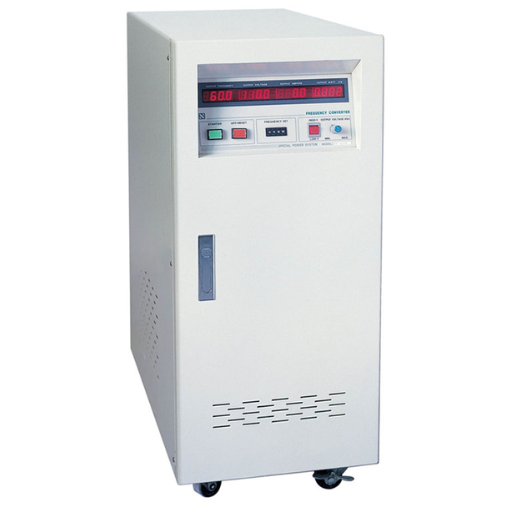
The necessity of an AC Frequency Converter depends on the scope of application. When a wide range of speeds, torques, or directions should be applied to an AC motor with accuracy, then extra AC Frequency Converters are indispensable. Besides, it is helpful in energy conservation, efficiency, minimizing mechanical wear and tear, and smooth functionality in varying load conditions. For example, it is used in heavy plants, transporters, air handling units, and pumping systems. Consider the functionality requirements of the system to establish if an AC Frequency Converter is in line with the targeted performance.
Assessing Your AC Power Needs
Evaluating your dependence and needs for AC power revolves around a comprehensive examination to recognize the prerequisites to be addressed to maximize the benefits. First of all, the ‘load factor’ of the system is calculated by collecting the power capacity of each available appliance and accounting for the peak demand. Moreover, the load should be examined about the voltage and frequency after ascertaining that it is within the standards applicable in the nation and with the equipment at hand. Furthermore, it is necessary to consider the load category, either resistive, inductive, or capacitive, as it is related to correcting the power factor and improving the system’s general performance.
Another factor is linked to changing load conditions and operational processes. For instance, in cases where the load fluctuates wildly, variable-frequency drives will help minimize energy utilization while upholding the required speed control. The other point is that the degree of total harmonic distortion should be considered concerning whether the system has a single-phase or three-phase supply.
It should also be noted that safety and scalability are relevant issues. For example, installing systems to protect against voltage surges and overloads extends the life of your infrastructure. At the same time, expansion into new technological areas, such as installing more equipment or expanding activities, should also be considered. Therefore, focusing on these issues will help develop an AC Frequency Converter that caters to current needs and future demands.
Identifying Suitable Applications of Frequency Converters
Due to the ability to regulate motors’ speeds and improve system performance, frequency converters are widely used in various fields such as Industrial, commercial, and renewable energy applications. The primary application is in systems operating motor-driven equipment, including pumps, fans, and compressors. Frequency converters increase the system’s energy efficiency, thus reducing the operating cost and wear and tear on mechanical parts by controlling the frequency and voltage supplied to the motor. This is particularly useful as air conditioning systems, water supplies, and factory processes are highly dynamic.
Moreover, frequency converters also play an essential role in areas such as renewable energy, particularly wind turbines, which are responsible for energy generation, causing such systems to produce at a constant frequency irrespective of the wind speed. Frequency converters also help integrate with the grid by enabling balance with the grid frequency and ensuring voltage levels.
Another interesting application is related to the railway industry where frequency converters are used in the supply of frequencies and voltages that the trains operating on electric power train systems need. The same applies to certain activities, for example, activities involving aircraft for ground power purposes during which frequency converters provide the 400 Hz power frequency, which is the appropriate frequency level for aircraft-consuming equipment.
The rise in technology has also led to the invention of small-sized, energy-efficient converters, which can be easily used on small equipment, factories, and automated systems. This innovation has enhanced the application of frequency converters, meaning they are suitable for Industry 4.0 and IoT-based systems. For frequency converters, this means faster, more efficient, and more flexible operations in modern industries that operate today.
Determining the Voltage and Frequency Requirements
It is also essential to get the voltage and frequency values correctly when dealing with frequency converters as part of electrical installations. However, voltage—in this case—is mainly determined by the equipment used within the given region or premises and should be allowed to him. Thus, under conditions of a supply network with a nominal voltage of 230V/50Hz and 120V/60Hz, the converter shall meet these requirements while compensating for voltage fluctuations and allowing reasonable operation of the proposed device.
Such control is crucial and depends mainly on the drive or equipment used. That is where variable frequency drives or VFDs come in handy; they allow the user to control the operating frequency variably, and hence, one can maintain the desired efficiency of the system without any wear and tear. For example, when enhanced speed and torque regulation are required, an open-loop coaster in the form of an advanced AC Frequency Converter with an active front end can be designed for the application. Hence, these factors allow optimizing the mode of operation in different spheres, such as ventilation and cooling systems, production processes, including automated lines, and other energy-consuming processes. In addition, it is essential to consider the load schedule – timely distribution of the electrical power consumption; the harmonics superposition – considering limits on the current consumption distortions; and the peak demand – proper oversight of the peak electricity consumption pattern.
How do you select the right converter for your AC system?
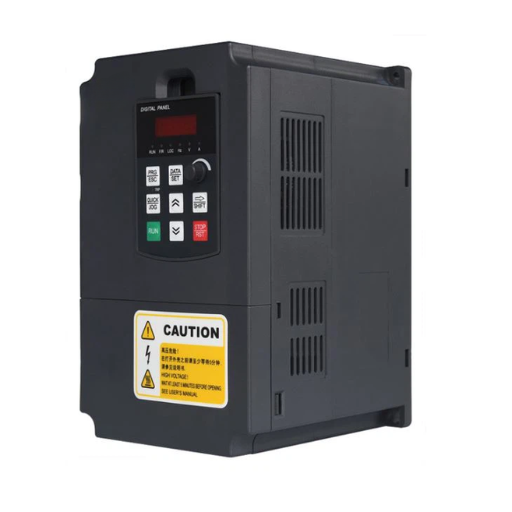
To select the right converter for your AC system, consider the following key factors:
- Power Requirements: Ensure the converter matches the voltage and current specifications of your AC system to handle the load safely and efficiently.
- Type of Load: Determine whether your system operates with resistive, inductive, or mixed loads, as this affects the choice of the converter.
- Efficiency: Look for converters with high energy efficiency ratings to minimize power loss and reduce operational costs.
- Compatibility: Verify that the converter is compatible with your system’s input and output requirements, including frequency and phase.
- Reliability and Safety: Choose a converter from reputable manufacturers that adhere to industry standards and offer built-in protection features such as overcurrent and overheating safeguards.
By addressing these factors, you can ensure optimal performance and prolonged lifespan for your AC system.
Evaluating the Input and Output Voltage
Determining the output calibration of the input and output voltages must be done carefully to increase the installation’s efficiency. Load characteristics and supply voltage characteristics should be taken into consideration. For example, 120V and 240V systems are mainly utilized within household electrical installations in the US, and higher values of the input voltage, about 480V-600V, are common in industrial applications.
The same conditions apply to the output voltage; it has to be practically achievable in the usual operational conditions of the respective equipment or connected load. Voltage incompatibility may cause the system to perform poorly, causing excessive operational loads on some parts and disabling them. Such specified variegated voltage controls through variable frequency drives, UPS, or AC Frequency Converter often become necessary when having specified control over the output voltage is crucial. This includes equipment such as voltage testers or power factor analyzers for meticulous, exact voltage measurement and continuation of assessment and alterations to avoid the machine’s degradation over time.
Understanding AC Output and Motor Speed Control
In AC systems, the speed of a motor is adjusted mainly by altering the frequency and voltage supplied to it. The speed-freq relation is given by the formula for synchronous speed, i.e., Ns = (120 x f) / P, where Ns is called the synchronous speed, typically denoted in rpm, f is the frequency of the system expressed in Hz, and P is the number of pole pairs of the machine. Hence, VFDs or any other form of equipment that can change the frequency of the supply can be used to manipulate the speed of the motor.
Today’s VFDs use power electronics devices that employ profound PWM techniques to give practical and economical performance with the least possible waste. These devices provide convenient control over the rotational speed of the electric motors and ensure less mechanical effort to the system, hence providing longer and better working performance. Moreover, state-of-the-art VFDs have special algorithms incorporated within them that allow them to respond to changing load conditions effectively so that power usage is minimized and performance is not diminished even under varying loads.
In most high-tech applications, this task is solved by applying closed-loop controls. In such systems, feedback instruments such as encoders or resolvers are used to continuously detect the position or speed of the motor, respectively, learn, and then adjust accordingly. This closed-loop function is very precise and is widely used in robotics, precision manufacturing, and aerospace engineering, where precise and reliable control is required.
What are the Main Applications of Frequency Converters?
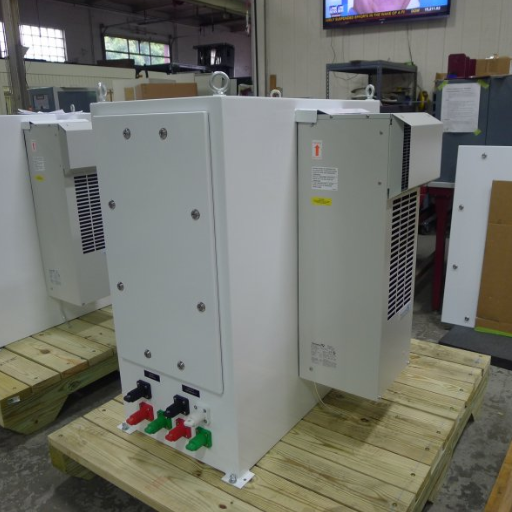
Frequency converters are widely used across various industries to control the speed and torque of electric motors. Key applications include:
- Industrial Automation: Optimizing motor performance in conveyor systems, pumps, and fans to enhance operational efficiency.
- HVAC Systems: Regulating airflow and temperature control in heating, ventilation, and air conditioning units.
- Renewable Energy: Managing the output of wind turbines and solar power systems for grid compatibility.
- Marine Engineering: Ensuring efficient propulsion and auxiliary systems in ships.
- Transportation: Facilitating smooth operation of escalators, elevators, and electric trains by modulating motor speed.
These applications emphasize the role of frequency converters in achieving energy savings, improved performance, and system reliability.
Use in HVAC and Industry
AC frequency converters increase efficiency in various industries, mainly heating, ventilation, air conditioning systems, and other industrial processes. They can always be found in HVAC systems to control the speed of running fans, compressors, and pumps. As a result, the required amount of air or heat can be provided by fans or pumps, respectively. Besides effective comfort management, it conserves energy since motors can operate at any speed.
In an example different from the previous examples, in industrial plants, frequency converters are used to enhance the complete process and the working of the machines. In this way, speed swings are depicted fairly well due to the changes in load, but output variations still exist, making it possible to avoid premature mechanical failure. To illustrate, the motors used in conveyor belts are controlled at a desirable level to prevent damage to the conveyed items. In so doing, the throughput is increased. Another point is that a frequency converter also helps save on energy costs by adjusting its load to the work done, which allows glassmakers who adhere to social responsibility guidelines to save resources and money.
Role in Renewable Energy Systems
Frequency converters are vital components in the renewable energy system, especially where wind and solar power exploitation is concerned. A frequency converter in a wind turbine makes it possible to convert rotor speeds that vary by changing rotational frequency into a smooth, fixed frequency that is available to fulfill the requirements of an electrical grid, thereby making it possible to implement it. In addition, frequency converters ensure the improvement of wind power efficiency and system reliability as they cope with fluctuating winds by matching the power produced by the generator to the demand of the power grid.
In the same way, when inverters are used in PV systems, they also apply frequency converters, which also take control of the flow of power and frequency levels, stabilizing them when integrating with the conventional power systems. They can operate at variable speeds and in flows that help to limit energy conversion losses. With the increased penetration of renewables, these devices play a significant role in transforming the grid to cater to fresh energy that is irregular and variable. The conjunction of these devices with modern power electronics reinforces the belief that more innovations could still be done to enhance clean energy.
Applications in Aerospace and Electronics
The progress in aerospace has increasingly depended on high-efficiency fuels, such as advanced power electric apparatus and storage solutions. These can include power supply systems that, in modern aircraft design, have made the production of lighter, aerodynamic, fuel-sufficient, and eco-friendly vehicles possible. One by one, there is electrification, advanced electrical power conditioning with electric machines, and a propulsion system for reducing emissions and performance improvement at different flight regimes.
AC Frequency Converter. Using materials science and the technology of microfabrications in the electronics industry has led to smaller, faster, and more energy-efficient gadgets. Examples include high-performance electronics in computing and data architectures, low-consumption IoT, and power gadgets for new energy. This helps to address issues of better heat dissipation, widening the equipment usage in terms of the period of effective operation and how well it can be blended with ICT systems for better communication and making sense of information.
How Do Frequency Converters Optimize Motor Speed?
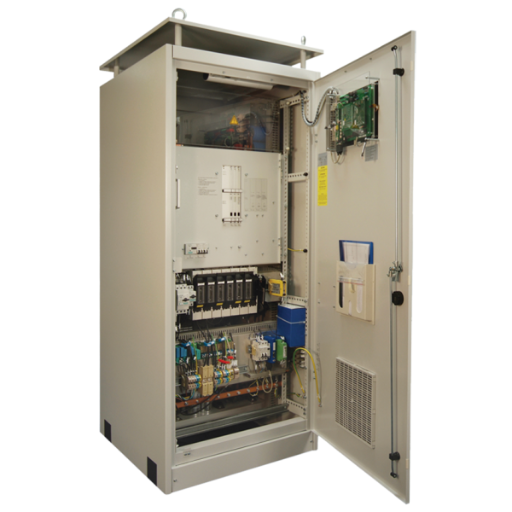
An energy regulator optimizes the speed of a motor based on the frequency of the electrical supply to the machines. This ensures that the motor speed is as required by the application since the frequency controllers directly modify the motor’s rotational speed. Doing so minimizes energy consumption, mechanical stresses, or wear and tear and enhances motor drivability. Furthermore, the AC Frequency Converter smoothens gradients, ensuring no abrupt wear that elongates the use of the motor.
Understanding Motor Speed Control Techniques
Controlling the speed of a motor via a pulse width modulation technique is a common practice, especially in an AC Frequency Converter. This technique adjusts the time over which voltage pulses are supplied to the motor. For these pulses, the duty cycle varies; as a result, the speed and torque of the motor are controlled to the desired levels. Traditional techniques add up a lot of power losses with their systems, which must be eliminated and improved. Improvements in technology mean that modern applications of PWM controllers include high-frequency switches, preventing such noise as buzzing during operation and harmonics, which can be destructive to a motor. Good application of PWM gives a lot of advantages; a smoother working increases the efficiency and reduces the possibility of motor malfunction.
Benefits of Variable Frequency Drive (VFD)
Applying VFDs in various industries and commercial sectors leads to many positive outcomes, especially regarding energy-saving and optimization systems. VFDs optimize power utilization by reducing the speed of the motor under the existing load. Compared to constant-speed systems, VFDs reduce energy use in most processes by 30-50%. Furthermore, this savings improves operational efficiency by reducing expenses and minimizing carbon footprints.
Moreover, VFDs also improve process control by correcting motor speed, torque, and acceleration. Thus, it avoids the harsh starting of drives, stress on the elements of construction, and, in general, the burden of maintenance work, therefore extending the time the equipment can work. One of the advantages of using VFDs is the reduced starting current, thereby alleviating disturbances on power supply systems and enhancing power factor correction.
The third benefit is the ease of integrating VFDs into higher-level control devices, including AC Frequency Converter logic control or BMS. This makes it possible to deliver better automation performance and conduct efficient real-time and Computational management. Many VFDs also assist with troubleshooting and maintenance through alarms or feedback about specific conditions, improving performance and reducing the chances of unexpected failures.
All in all, the use of VFDs offers a significant technical step for many industries in optimizing performance, effectiveness, and environmental impact.
Impact on Power Conversion and Efficiency
Optimizing the implementation of Variable Frequency Drives (VFD) in power systems is an efficient way of enhancing the various power conversion processes in these systems. It enables improved control of the speed and torque of the motor. VFDs accomplish this by varying the frequency and voltage supplied to motors, which promises to reduce wasted energy and increase the operations’ efficiencies. It has been reported that the energy-saving potential of using VFDs ranges up to 50% in applications such as heating, ventilating, and air conditioning equipment, water pumps, conveyor belts, and other equipment with variable loads.
Apart from this, VFDs are known to offer better power factors and therefore contribute towards reduced power (electrical energy ) demand on the grid, which in turn leads to the mitigation of the extent of electricity bills. Modern VFD technologies have adopted the latest semiconductors such as SiC and GaN, which can switch faster, operate more efficiently, and generate less heat than silicon ones. These transformations in VFDs considerably affect the systems applied after VFDs in a manner of non-excessive harmonics and quality of power improvement. This is why they are handy in energy-intensive industries worldwide, dealing with strict legislation for environmental protection and an economical and efficient approach towards energy.
Reference Sources
-
Frequency Control Enhancement for Hybrid Microgrid Using Multi-Terminal Multi-Function Inverter
- Key Findings: This study introduces a multi-terminal multi-function inverter (MT-MF) for battery energy storage systems to enhance frequency stability in hybrid microgrids. The proposed system uses model predictive control and virtual synchronous generator techniques to improve dynamic frequency response during disturbances.
- Methodology: The research involved a microgrid simulation with renewable energy sources, diesel generators, and battery systems using MATLAB/Simulink. The performance of the MT-MF inverter was compared under various disturbance scenarios.
-
Fork-Connected Autotransformer Based 30-Pulse AC-DC Converter for Power Quality Improvement
- Key Findings: This paper presents a 30-pulse AC-DC converter design using a fork-connected autotransformer to improve power quality in direct torque-controlled induction motor drives. The proposed converter achieves a total harmonic distortion (THD) of less than 2% and a near-unity power factor across varying loads.
- Methodology: The design was modeled and simulated in MATLAB, and its performance was analyzed against IEEE power quality standards. The study compared the proposed converter with traditional six-pulse converters.
-
- Key Findings: This research focuses on a single-phase sinusoidal pulse width modulation (SPWM) inverter for wind energy systems. The inverter, controlled by a PIC microcontroller, produces a high-quality AC output with a THD of 0.19%, suitable for grid integration and household applications.
- Methodology: The inverter was designed and tested using Proteus and Simulink software, followed by experimental validation. The study emphasized the use of SPWM for harmonic reduction and efficient energy conversion.
- Top AC Frequency Converter Suppliers In China
Frequently Asked Questions
Q: What is the primary function of a frequency converter?
A: A frequency converter’s primary function is to convert power from one frequency to another, allowing electrical equipment to operate correctly when the available power frequency does not match its requirements.
Q: How does a frequency converter differ from an inverter?
A: While both devices are used to control and convert electrical power, a frequency converter changes the frequency of AC power, while an inverter converts DC power to AC power. A frequency converter can include an inverter circuit as part of its operation.
Q: Why is a frequency converter commonly used in marine applications?
A: Frequency converters are used in marine applications to ensure that electrical equipment operates smoothly. They convert the ship’s power frequency to meet the specific requirements of onboard systems, which may need a 50Hz, 60Hz, or even 400Hz frequency in some cases.
Q: What types of electrical equipment benefit from using a frequency converter?
A: Frequency converters are beneficial for various electrical equipment, including motors, pumps, and drives, especially in situations where power is required to be at a different frequency than the local power source provides.
Q: How does a static frequency converter work?
A: A static frequency converter first converts AC power to DC power, then uses an inverter circuit to convert the DC back to AC at the desired frequency. This process allows the power to be tailored to the application’s specific needs.
Q: What role do insulated gate bipolar transistors (IGBTs) play in frequency converters?
A: Insulated gate bipolar transistors (IGBTs) are used in frequency converters to switch the DC input to the inverter circuit efficiently, enabling the generation of a pure sine wave output at the required frequency.
Q: Can frequency converters be used in automotive applications?
A: Yes, frequency converters can be used in automotive applications to adapt the power frequency for various vehicle systems, particularly in electric and hybrid vehicles, where power conversion from DC to AC is necessary for specific components.
Q: What is the importance of converting power to a pure sine wave?
A: Converting power to a pure sine wave is crucial for ensuring that electrical equipment operates efficiently and reliably, as it minimizes harmonic distortion and potential damage to sensitive components.
Q: Why might a frequency converter be needed to convert 50 Hz to 60 Hz or vice versa?
A: A frequency converter might be needed to convert 50Hz to 60Hz or vice versa when equipment designed for one frequency must operate in a region where the power supply is at a different frequency, ensuring compatibility and optimal performance.
Q: Are there specific power applications where a frequency converter is essential?
A: Frequency converters are essential in power applications where precise control of motor speed and torque is required, such as in industrial automation, HVAC systems, and renewable energy systems, to ensure compatibility and efficiency.
